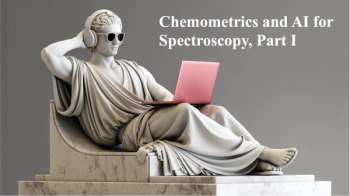Key Points
- Diffuse reflectance spectroscopy detects additive type and ratio with only 2.4% variance across powder types.
- Conventional flowability and rheology tests showed inconsistent results due to base powder morphology differences.
- DRS proved effective as a fast, non-destructive technique for assessing powder blend homogeneity.
- Integrating DRS in AM systems could allow real-time quality monitoring during the powder spreading process.
Spectroscopy Emerges as a Game-Changer in Additive Manufacturing Quality Control
In the dynamic world of additive manufacturing (AM), the quality and consistency of raw materials, especially metal powders, play a pivotal role in final product performance. A recent study published in Powder Technology demonstrates an innovative, non-destructive method to assess powder blend uniformity using diffuse reflectance spectroscopy (DRS). Conducted by Konrad Gruber, Lillian Ahmad, Mohammed Farag, and Irina Smolina of Wroclaw University of Science and Technology and Université catholique de Louvain, the research reveals that DRS could become a valuable quality control tool in metal-based 3D printing processes (1–2).
A Closer Look at Powder Blends
The study focused on blends of aluminum alloys Al5052 and Al5254 with three common additive compounds—zirconium diboride (ZrB₂), calcium hexaboride (CaB₆), and tantalum (Ta)—which are known to enhance mechanical performance and reduce cracking during the laser-based powder bed fusion (PBF) process. These additives are selected to form specific reinforcing phases, such as Al3X, during solidification (1).
While traditional metrics such as flowability, bulk density, and rheology (measured by rotating drum and FT4 rheometers) were evaluated, these approaches showed limitations due to the inherent morphological differences between the base powders. These variations significantly affected flow behavior and particle cohesion, leading to inconsistencies that hindered direct comparison across samples (1).
Spectroscopic Analysis Offers Precision
In contrast, near-infrared DRS (900 nm to 1100 nm) emerged as a highly consistent and sensitive tool for assessing powder blends. The technique, which measures the light-scattering behavior of powder surfaces, was able to detect even subtle differences in additive content and type. Despite notable differences in particle morphology between Al5052 and Al5254 blends, DRS showed a normalized reflectance variation of only 2.4% between them, demonstrating its robustness and potential for real-time blend monitoring (1).
According to the researchers, DRS can accurately identify powder composition and homogeneity without requiring destructive sampling or complex instrumentation. Its ability to detect variations in additive content down to specific weight ratios offers a key advantage for in situ quality control in AM systems (1–2).
Comparative Techniques Fall Short
The study also utilized traditional characterization methods, including scanning electron microscopy (SEM), energy dispersive spectroscopy (EDS), particle size distribution (PSD), and bulk density analysis. While SEM and EDS confirmed that additives were evenly distributed in both Al5052 and Al5254 blends, these methods are labor-intensive and less practical for routine in-line manufacturing checks (1).
Flow behavior assessments using Hall funnels, bulk density tests, and FT4 rheometry showed inconsistent results due to the complex interaction of particle morphology, size, and additive type. These tools are better suited to characterizing global powder properties than evaluating blend quality specifically (1).
Real-World Applications in AM Production
The implications of this study are far-reaching. In industrial AM settings, detecting variations in powder homogeneity before or during the build process can help prevent layer defects, porosity, and mechanical inconsistencies in final parts. The researchers suggest that integrating DRS into PBF systems could enable real-time monitoring of powder spread and uniformity, greatly enhancing quality assurance protocols (1).
This work positions DRS as a promising supplement, or even alternative, to conventional techniques, particularly when speed, cost, and non-destructive testing are critical factors.
References
(1) Gruber, K.; Ahmad, L.; Farag, M.; Smolina, I. Diffuse Reflectance Spectroscopy for the Qualification of Powder Blends for Additive Manufacturing. Powder Technol. 2025, 453, 120652. DOI: 10.1016/j.powtec.2025.120652
(2) Ceroni, M.; Gobber, F. S.; Grande, M. A. Ultraviolet–Visible–Near Infrared Spectroscopy for Assessing Metal Powder Cross-Contamination: A Multivariate Approach for a Quantitative Analysis. Mater. Des. 2024, 242, 113023. DOI: 10.1016/j.matdes.2024.113023






